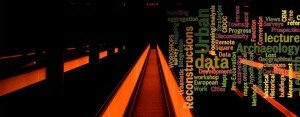16th International Conference on Cultural Heritage and New Technologies
Urban Archaeology – Prospection, Survey and Data Integration

The event, which took place in Vienna, Austria, from 14–16 November 2011, was streamed into a series of international meetings focusing on the use of ICTs for the investigation and valorization of Cultural Heritage. Having reached the 16th edition, these events are now considered a traditional appointment for the international scientific community and an occasion not to be missed to exchange experience among researchers and get updated with the newest approaches in these fields.

The meeting offers also the possibility for networking and stakeholders are present with SMEs presenting new instruments and technologies.
The 16th edition was planned to be the first in a series of annual meetings meant to highlight different aspects related to urban archaeology.
Its focus on Prospection, Survey and Data Integration is closely related to the research carried out by the Radio-Past partners in the Project’s various open laboratories. Their work at the main open lab at Ammaia, Portugal, was presented at the conference under the following title:
The Roman city of Ammaia (Portugal): from total survey to 3D reconstruction
Frank VERMEULEN1 / Cristina CORSI2 / Michael KLEIN3 / Guenther WEINLINGER3
(1Ghent University, Department of Archaeology, Belgium / 2Università di Cassino, Facolta di Lettere, Italy / 37reasons Medien GmbH; Austria)
Outline:
– full survey of an abandoned urban centre
– integration of geophysics, remote sensing, stratigraphic and topographic data
– reconstruction of the townscape
Abstract: Simultaneous with on-going archaeological excavations of the Roman town site of Ammaia in Southern Portugal, a group of researchers acting within the EC funded project “Radiography of the Past (RADIOPAST)”, have during the past two years, achieved a full coverage geophysical survey of the intra-mural part and large tracts of the extra-mural areas of this abandoned ancient city in Lusitania. Using a wide array of instruments, for prospections with GPR, earth resistance and magnetometers, this approach allowed an in depth analysis of an abandoned Roman centre, linking the excellent survey data with stratigraphic information, obtained via earlier excavations and via focused ground truthing operations, including small trenching and augering. Together with data from remote sensing and fine DGPS surveys this now allows to study the urbanism of a very systematically and ex novo built Romano-Lusitanian town. Part of the field project also leads to a tentative reconstruction of many aspects of the urban pattern and structures, providing a unique high resolution survey-based approach to visualising ancient cities. The presentation will include aspects of integrated methodology of survey, high resolution mapping results and will discuss the process of visualisation of the site in Roman times.
Please use the following link for more detailed information on the 16th International Conference on Cultural Heritage and New Technologies: http://www.stadtarchaeologie.at/


